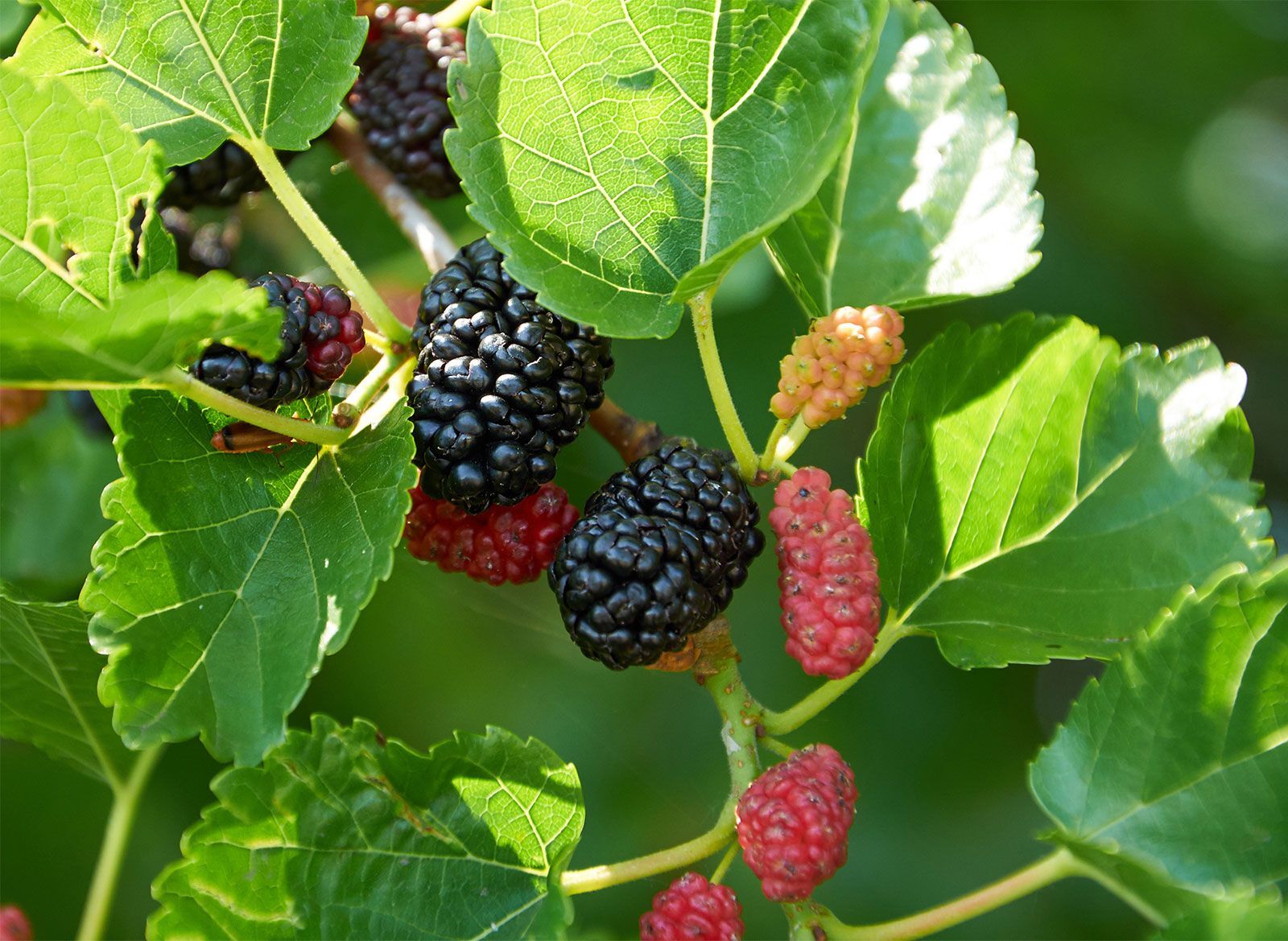
Mulberries are more than just a tasty fruit. These little berries pack a punch with their rich history, nutritional benefits, and surprising uses. Did you know mulberries come in different colors like red, white, and black? Each type has its own unique flavor and health perks. Mulberry trees have been around for centuries, playing a crucial role in the silk industry. Yes, silk! Silkworms feast on mulberry leaves, making these trees essential for silk production. Besides their historical significance, mulberries are loaded with vitamins, minerals, and antioxidants. They can boost your immune system, improve digestion, and even help control blood sugar levels. Ready to learn more about these fascinating berries? Let's dive into 25 amazing facts about mulberries!
Key Takeaways:
- Mulberry trees have a rich history, from ancient China to colonial America, and offer delicious, nutritious berries with high vitamin C and fiber content. They also have diverse uses, from culinary to medicinal and environmental benefits.
- Mulberry trees come in different varieties, such as white, red, and black, each with unique flavors and uses. They are fast-growing, low-maintenance, and environmentally friendly, providing erosion control, wildlife habitat, and air purification.
What is Mulberry?
Mulberry trees are fascinating plants with a rich history and many uses. These trees produce delicious berries and have been cultivated for thousands of years. Let's dive into some intriguing facts about mulberry trees and their fruit.
Historical Significance of Mulberry Trees
Mulberry trees have played a significant role in various cultures and economies throughout history. Here are some key historical facts:
- Ancient Cultivation: Mulberry trees were first cultivated in China over 4,000 years ago.
- Silk Production: The leaves of the white mulberry tree are the primary food source for silkworms, which produce silk.
- Royal Gardens: In ancient Rome, mulberry trees were often planted in royal gardens due to their beauty and usefulness.
- Colonial America: Early American settlers planted mulberry trees to support the silk industry.
Nutritional Benefits of Mulberries
Mulberries are not only tasty but also packed with nutrients. Here are some nutritional facts about these berries:
- Rich in Vitamin C: A single serving of mulberries provides a significant portion of the daily recommended intake of vitamin C.
- High in Fiber: Mulberries are an excellent source of dietary fiber, aiding in digestion.
- Antioxidants: These berries contain high levels of antioxidants, which help protect the body from free radicals.
- Iron Content: Mulberries are one of the few fruits that contain a notable amount of iron.
Varieties of Mulberry Trees
There are several types of mulberry trees, each with unique characteristics. Here are some facts about the different varieties:
- White Mulberry: Native to China, this variety is primarily used for feeding silkworms.
- Red Mulberry: Found in North America, red mulberries are known for their sweet and tart flavor.
- Black Mulberry: Native to Western Asia, black mulberries are prized for their rich, sweet taste.
- Hybrid Varieties: Some mulberry trees are hybrids, combining traits from different species for improved fruit quality.
Uses of Mulberries
Mulberries have a wide range of uses beyond just being a tasty snack. Here are some interesting facts about their applications:
- Culinary Uses: Mulberries can be used in jams, jellies, pies, and even wines.
- Medicinal Uses: Traditional medicine has used mulberries to treat various ailments, including sore throats and digestive issues.
- Dye Production: The juice of mulberries can be used as a natural dye for fabrics.
- Animal Feed: Mulberry leaves are not only good for silkworms but also make excellent feed for livestock.
Growing Mulberry Trees
Growing mulberry trees can be a rewarding experience. Here are some facts about cultivating these trees:
- Fast Growth: Mulberry trees are known for their rapid growth, often reaching maturity in just a few years.
- Hardiness: These trees are hardy and can thrive in a variety of climates and soil types.
- Low Maintenance: Mulberry trees require minimal care once established, making them ideal for home gardens.
- Propagation: Mulberry trees can be easily propagated from cuttings or seeds.
Environmental Impact of Mulberry Trees
Mulberry trees also have a positive impact on the environment. Here are some environmental facts:
- Erosion Control: The extensive root systems of mulberry trees help prevent soil erosion.
- Wildlife Habitat: Mulberry trees provide food and shelter for various wildlife species, including birds and insects.
- Air Purification: These trees help improve air quality by absorbing pollutants and releasing oxygen.
- Carbon Sequestration: Mulberry trees capture and store carbon dioxide, helping to mitigate climate change.
Fun Facts About Mulberries
To wrap things up, here are some fun and quirky facts about mulberries:
- Color-Changing Berries: Mulberries change color as they ripen, starting green, then turning red, and finally black or dark purple when fully ripe.
Mulberries: More Than Just a Berry
Mulberries aren't just tasty; they're packed with nutrients and history. These berries have been used in traditional medicine for centuries, offering benefits like improved digestion, better heart health, and stronger immunity. Plus, they're a great source of vitamins and minerals.
Growing mulberries is pretty easy, making them a favorite for home gardens. They can thrive in various climates and don't need much maintenance. Whether you eat them fresh, dried, or in recipes, mulberries add a sweet, nutritious touch.
So, next time you see mulberries, remember they're more than just a snack. They're a powerhouse of health benefits and a piece of history. Enjoy them in your diet and maybe even consider planting a tree in your backyard. Mulberries truly are a berry worth knowing.
Frequently Asked Questions
Was this page helpful?
Our commitment to delivering trustworthy and engaging content is at the heart of what we do. Each fact on our site is contributed by real users like you, bringing a wealth of diverse insights and information. To ensure the highest standards of accuracy and reliability, our dedicated editors meticulously review each submission. This process guarantees that the facts we share are not only fascinating but also credible. Trust in our commitment to quality and authenticity as you explore and learn with us.


